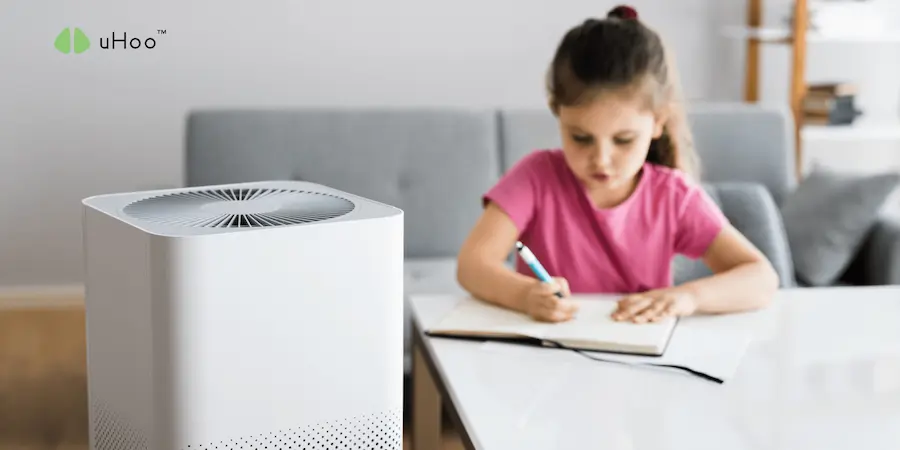Want to learn how air purifiers work? An air purifier isn’t a magic box. It’s a meticulously engineered device designed to actively clean the air circulating through a room. How air purifiers work is actually simple: draw in contaminated air, pass it through a series of filters, and release cleaner air back into space. But the real “magic” lies in the intricate mechanics of these filters and technologies.
How air purifiers work is they utilize a multi-stage filtration system, each stage targeting different types of pollutants. Think of it like a layered defense system for your lungs.
- The Fan (The Air Mover): At the heart of every air purifier is a fan. This fan’s job is to continuously draw in the ambient air from the room. The air then passes through the internal filtration system before being expelled as purified air. The power and design of the fan directly impact the purifier’s Clean Air Delivery Rate (CADR), which tells you how quickly it can clean a room of a certain size.
- The Pre-Filter (The First Line of Defense): As air is drawn into the unit, it first encounters the pre-filter. This is typically a mesh-like screen designed to capture larger particles.
- What it catches: Visible dust, pet hair, lint, and other large debris.
- Why it’s important: It protects the more delicate and expensive filters downstream from becoming clogged too quickly, thereby extending their lifespan and maintaining the purifier’s overall efficiency. Pre-filters are often washable, making maintenance easier.
- The HEPA Filter (The Particle Powerhouse): Following the pre-filter, the air moves through the High-Efficiency Particulate Air (HEPA) filter. This is the cornerstone of most high-quality air purifiers and is crucial for removing microscopic airborne particles. A “True HEPA” filter is certified to capture at least 99.97% of particles that are 0.3 micrometers in size.
- How HEPA filters work: Unlike a simple sieve, HEPA filters don’t just block particles based on size. They utilize three main mechanisms:
- Impaction: Larger particles (like pollen, mold spores) collide directly with the filter fibers and get trapped.
- Interception: Medium-sized particles (like fine dust, pet dander) follow the airflow, but as they pass close to the fibers, they stick to them.
- Diffusion: The smallest, lightest particles (like smoke, bacteria, viruses, ultrafine dust smaller than 0.1 microns) move erratically in the airflow (Brownian motion). This erratic movement increases their chances of colliding with and sticking to the filter fibers.
- What it catches: Pollen, pet dander, dust mites, mold spores, bacteria, viruses, and fine particulate matter (PM2.5) from smoke and other sources.
- How HEPA filters work: Unlike a simple sieve, HEPA filters don’t just block particles based on size. They utilize three main mechanisms:
- The Activated Carbon Filter (The Odor and Gas Gobbler): Many air purifiers include an activated carbon filter, often placed after the HEPA filter. Unlike particulate filters, activated carbon is designed to tackle gaseous pollutants and odors through a process called adsorption.
- How this filter works: Activated carbon is a highly porous material, created by treating carbon (often from coconut shells or wood) to increase its surface area. This vast internal surface area has millions of tiny pores that chemically attract and trap gas molecules and odors. Think of it like a sponge that “soaks up” bad smells and invisible gases.
- What it catches: Volatile Organic Compounds (VOCs) from paints, cleaning products, new furniture, cooking odors, pet odors, and smoke smells.
Beyond these core filters, some air purifiers incorporate additional technologies for enhanced purification:
- UV-C Light (Germicidal Action): Ultraviolet-C (UV-C) lamps emit short-wave UV light, which can inactivate airborne microorganisms. As air passes through a chamber containing the UV-C lamp, the light damages the DNA of bacteria, viruses, and mold spores, rendering them unable to reproduce and cause harm. This is often used as a supplementary stage.
- Ionizers: These devices release negatively charged ions into the air. These ions attach to airborne particles, giving them an electrical charge. The charged particles then become heavier and fall out of the air onto surfaces (or are attracted to a collection plate within the purifier), making them easier to clean or be captured by other filters. While effective for particles, some ionizers can produce small amounts of ozone, which can be an irritant.
In essence, how air purifiers work is by continuously drawing in indoor air, passing it through a series of specialized filters that capture different sizes and types of pollutants (from large dust to microscopic VOCs and even some pathogens), and then releasing significantly cleaner, fresher air back into your living space.
This constant circulation and filtration create a healthier environment, reducing triggers for allergies and asthma, neutralizing unpleasant odors, and safeguarding your respiratory health.
Understanding these mechanics empowers you to choose a purifier that best suits your needs and to ensure its optimal performance through regular filter maintenance. These devices would do even more wonders for your indoor air with the help of a uHoo air quality monitor. Learn more at getuhoo.com.



